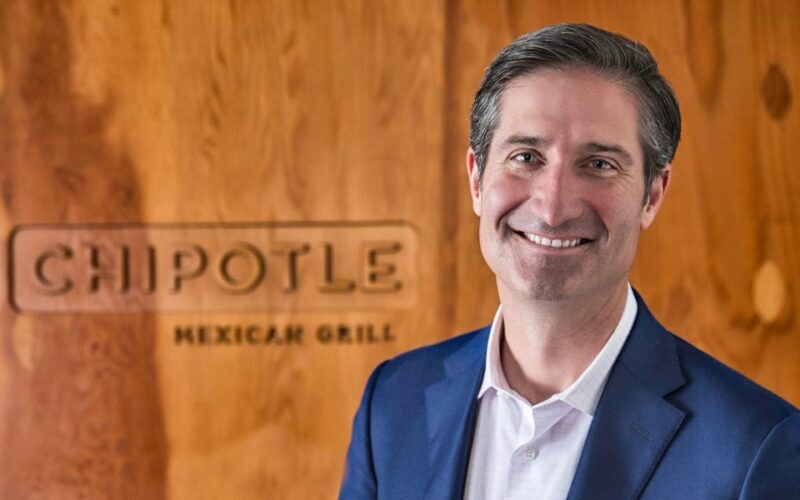Brian Niccol’s decision to leave Chipotle and become CEO of Starbucks has sparked speculation about the changes he might make at the embattled coffee chain.
Niccol laid out his management approach on the “How Leaders Lead with David Novak” podcast earlier this year. He shared how he revitalizes struggling businesses, finds and introduces fresh ideas, and delivers world-beating products and services.
The burrito boss said he wants to be seen as a decisive CEO who nurtures future leaders and can grow a company, not just turn one around. He also broke down six key elements of his leadership style that he’s likely to employ at Starbucks when he starts in September.
1. Tapped in
When you’re trying to keep a brand relevant, it helps to be attuned to what’s popular among younger generations.
Niccol is an active user of TikTok, Snapchat, and Instagram for that reason. He also ensures that Chipotle’s bosses discuss the trends they’re seeing and what their kids and their kids’ friends are talking about every week.
“We want to be very much in touch with what young people are doing,” Niccol said. “It gives us some insight into what are the things we can do to keep Chipotle fresh, keep Chipotle connected.”
2. Embrace experiments
Leaders who welcome fresh thinking and experimentation have an edge in attracting talent and driving innovation.
“We are a place for ideas,” Niccol said. “If you want to come to a place and you’re willing to pressure test your ideas, we’re going to give you a shot with those ideas to make it to market.”
He ticked off several ideas that came from within Chipotle, including its metaverse experiments, the use of its reward program to bolster engagement with customers, and the addition of carne asada to menus.
Niccol said he uses a “stage gate process” to vet ideas and take them from concept to nationwide rollout, which includes performance metrics and store feedback.
Irene Jiang/BI
3. Listen and learn
Niccol shared the first step of his turnaround plans: “Take the time to understand who these people are.”
Before he starts barking instructions or declaring what the company needs to do, he finds out about his new colleagues, their beliefs, and what’s working or not working in their view.
He also emphasized the importance of reacting to customer and worker feedback. Soon after joining Chipotle in 2018, he visited some of the chain’s restaurants and asked the staff what common complaints they hear.
A big one was the absence of a large portion of guacamole from the menu, which forced workers to invent a workaround.
“They were just using, I think it was the queso cup, and they would charge people two smalls,” Niccol said. “And I’m like, that’s ridiculous.”
Niccol promptly resolved the problem by adding the necessary buttons to cashier terminals and containers to serving lines.
4. Build the right team
Once Niccol gets to know his new coworkers and identifies the pressing problems, he decides who he wants on his team and who isn’t a good fit.
“I believe in you. Hopefully, you believe in me. Let’s lock arms and do this,” he said, giving a sense of how he gets the people he chooses to commit to his strategy.
Niccol also figures out the personnel gaps that need filling. At Chipotle, he realized he needed to find “great” marketing and supply chain leaders and expand the digital team to bolster its capabilities.
On the other hand, he moved the company’s restaurant support center from Denver to Los Angeles because it needed a “complete reset.”
5. Focus and action
Niccol likes to choose one or two things for his new team to tackle that will make an immediate difference.
At Chipotle, his initial priorities were catering to online orders with digital make lines and mobile pickup shelves, and improving how the restaurants operated and food was prepared and served.
Gregory Rec/Getty Images
He also likes to pick one or two things for each of his top managers to focus on. For example, he told Chipotle’s marketing boss that he wanted the brand to be relevant and to get the word out about what makes customers love it.
“Collectively sharing the obligation to achieve those things is what I’ve done, and it appears to be effective,” he said.
6. Demand the best
Niccol recalled that after Chipotle reopened following the pandemic, it was falling short of its previous high standards.
“I’d go into restaurants, we’d be out of chips. I would go into a restaurant near closing, we’d be out of chicken, rice,” he said. Throughput, or number of transactions every 15 minutes, was “way off” pre-pandemic levels.
“It was just like, we had made way too many excuses for too long, and COVID gave us the ability to provide those excuses,” he said. “And it’s like, hey, it’s time to put those aside. Let’s get back to the standard of excellence that we know we can hit.”
“I went to our team director meeting and I said, ‘Hey gang, I am here to tell you we are not succeeding,'” Niccol said. “We collectively should be embarrassed that we have a report telling us when we’re out of chips.”
“Like, we’re a Mexican restaurant. When was the last time you went to a restaurant and they didn’t have chips, right?” Niccol added, noting Chipotle solved those issues by the next year after his intervention.
“Every once in a while, they respect you for recognizing we’re not hitting the number.”
Source link
lol

